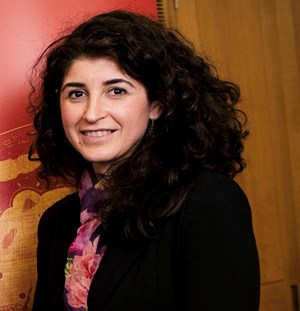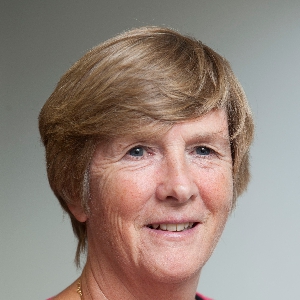Grants
The DIPG / DMG Collaborative has funded $19,922,550 in DIPG/DMG research.
Interested in applying for a grant from the DIPG / DMG Collaborative? Learn more.

Institute of Cancer Research - $121,863
$121,863.00
November 2019
Targeting Top3A-Amplified DIPG cells by Sirtuin inhibition.
Diffuse intrinsic pontine glioma (DIPG) is a malignant brainstem tumour arising in children representing a major unmet clinical need, with a 2-year survival rate close to zero. With chemotherapy ineffective and surgical intervention not possible, new therapeutic approaches are urgently required based upon the unique biological mechanisms driving DIPG tumorigenesis. We recently discovered amplification of the gene TOP3A to play an important role in a proportion of DIPGs. Critically, cells driven by this genetic alteration to be exquisitely sensitive to inhibitors of sirtuin, which appears to link TOP3A to DNA repair. We plan to explore this in more detail by turning off, and/or turning on the gene in DIPG cells, in order to better understand it’s precise function. We will also screen a range of drugs known to target sirtuins, in order to determine which may be most useful in the clinic, both in cells grown in the laboratory as well as using patient-derived mouse models. We will further look for possible combinations with sirtuin inhibitors in order to further enhance the potential for rapid translation.

Telethon Kids Institute - $49,512
$49,512.00
August 2019
Development of a new and effective therapy against Diffuse Intrinsic Pontine Glioma.
Diffuse intrinsic pontine glioma (DIPG) is a rare paediatric brain cancer that is almost universally fatal. Surgery is generally too risky and standard chemotherapy is ineffective. Radiation is the only treatment currently available with proven, yet temporary, benefits. There is no cure for DIPG. Targeted therapy uses drugs aimed at specific molecules involved in tumour growth, preventing the growth and spread of cancer cells. This approach has proven effective against several types of cancers. However, no effective targeted therapy exists against DIPG. In previous experiments, targeted therapy has been used to “switch off” a factor that is crucial for DIPG cells to grow. Surprisingly, following treatment with targeted therapy, DIPG cells not only survive but grow and thrive. A potential factor explaining this conundrum is the plasticity of brain cells. Plasticity allows brain cells to adapt to different conditions in their environment. Just like normal brain cells, DIPG cells also exhibit plasticity, and may be using it to evade drug treatments. Our plan is to use drugs that specifically inhibit DIPG’s plasticity, in combination with targeted therapies already in use for cancer treatment. This approach should enhance the anti-cancer efficacy of targeted therapies, leading to improved survival of DIPG patients.
Our study will first be conducted in-vitro, using DIPG cells from patients, and then in-vivo, using mice as model organisms. The drugs we plan to use will target ion channels, which are pore-forming proteins found in the cell’s membrane, which control the flow of small charged molecules (like potassium) in and out of the cell. These flows of ions can rapidly change the internal wiring of a cell. For this reason, ion channels have been associated with brain plasticity, and DIPG cells are known to make extra amounts of ion channels. We will employ state-of-the-art techniques to study ion channels in a group of cancer cells obtained from DIPG patients. The techniques for studying ion channels are well established but have not been used by brain cancer researchers. Our first goal is to identify which sets of ion channels are present on the surface of DIPG cells.
Once we have identified the ion channels present in DIPG cells, we will test drugs specifically designed to block these ion channels. Importantly, drugs that block ion channels are already approved for use in the treatment of other neurological conditions such as epilepsy. Hence, these drugs have a better chance to be rapidly trialled in patients. Overall, our work aims to find new and effective treatment options DIPG patients who currently have a very poor life expectancy.

Sydney Children’s Hospital - $175,089
$175,089.00
November 2018
Polyamine Pathway Metabolism as a Novel Therapeutic Option for Diffuse Intrinsic Pontine Glioma
Diffuse intrinsic pontine glioma (DIPG) is the most aggressive of all childhood cancers. Standard treatment with radiotherapy is only palliative and chemotherapy has been found ineffective. Polyamines are organic compounds essential for key functions of living cells. They can be made by human cells but also generated from intestinal microorganisms and taken from dietary sources. Polyamines are produced at higher levels in cancer cells and contribute thus to aberrant growth of multiple adult and childhood tumours. Our preliminary experiments have shown that polyamines increase the growth of DIPG tumour cells. We have tested a specific combination of drugs that inhibit the production and cellular uptake of polyamines and found this to be highly active against DIPG cells but not in healthy cells. Furthermore, we have tested this combination in two separate orthotopic animal models of DIPG, which recapitulate the human disease, and found that the survival of these animals was significantly enhanced and tumour growth was reduced. This combination was also found to significantly reduce the growth of DIPG cells together with panobinostat, a targeted drug that is currently in a clinical trial for DIPG patients. This project will determine in animal models of DIPG whether polyamine inhibition therapy can enhance the effects of radiotherapy, which is the current standard treatment for DIPG patients. Furthermore, we intend to evaluate the combination of polyamine inhibitors together with panonbinostat, in animal models of DIPG. Finally we also aim to determine the therapeutic efficacy of polyamine inhibition in other paediatric brain tumor animal models. Positive results from this study will provide the preclinical evidence required to urgently translate these novel discoveries to clinical trial to directly benefit children with DIPG and other aggressive brain tumours.

Cincinnati Children's Hospital - $540,742
$540,742.00
November 2018
Expansion of the International DIPG Registry.
Diffuse intrinsic pontine gliomas (DIPG) are the most common brainstem tumors in children, representing approximately 75-80% of all pediatric brainstem tumors. 1 Approximately 200-300 patients are diagnosed with DIPG in all of North America and Europe. 1,2 DIPG accounts for 10-15% of all new pediatric brain tumor diagnoses and is the leading cause of brain tumor-related death in children.1 The median age at diagnosis is 6 to 7 years 2-4 and prognosis for patients with DIPGs remains dismal with a median survival of less than 1 year. Although radiotherapy does improve neurological function and survival by 2-3 months, no effective chemotherapeutic regimens are currently available.1,2 Achieving cure for all children with DIPG remains a major goal of pediatric neuro-oncology. In this application, we propose the expansion of the International Diffuse Intrinsic Pontine Glioma Registry which is now the largest and most comprehensive collection of data including clinical, radiologic and pathologic data linked to a bioinformatics repository of molecular data from a diverse cohort of DIPG patients available to researchers throughout the world. With the generous support of a coalition of pediatric brain tumor foundations from the DIPG Collaborative, and collaborations with 106 academic medical centers in the US, Canada, Australia, New Zealand, Egypt, Brazil, Chile, China, Argentina, India, Japan, Saudi Arabia, United Arab Emirates, and Lebanon, the Registry is growing exponentially. From April 2012 to August 2018, 885 patients diagnosed with DIPG have been enrolled from 106 collaborating institutions. The specific aims include: 1) To continue recruitment of patients diagnosed with DIPG in the International DIPG Registry to greater than 1,000 patients and further expand internationally; 2) To provide a repository of integrated data set compromised of clinical, pathologic, radiologic and molecular features to the clinical research community for promotion of hypothesis generation and analysis and maintain follow up on all cases; 3) To facilitate conduct of autopsies and sharing of fresh tissue for establishment of in vitro and in vivo models by investigators to be shared with investigators around the world; 4) To expand the bioinformatics repository of existing molecular data on DIPGs that can be linked to patient information in the registry through the Links and Viva platform to include prospective data; 5) To develop a program focused on quality of life through a longitudinal study where patient and/or parent proxy-dyads who enroll on the International DIPG Registry will complete Health related quality of life measures at specified time intervals and aid in supportive management; 6) To broaden collaborations among investigators for hypothesis-driven research studies through the registry that will ultimately lead to better classification and more effective treatment of patients with DIPG. In the next year, the International DIPG Registry investigators will promote robust collaborative research projects on all aspects of DIPG, and will continue to make the International DIPG Registry data available to external investigators after review of the proposed research by Scientific Advisory Committee (SAC). Our long-term goal is to expand on the highly collaborative, international, hypothesis-driven research infrastructure to continue to support a wide spectrum of interdisciplinary and translational projects in DIPGs for all investigators. The data collected form a research continuum from basic biology to clinical practice that will ultimately address our primary goals of a) understanding the biology of DIPGs, b) developing more effective therapies and c) developing innovative approaches to diagnosis, response assessment and multidisciplinary treatment and follow-up that will improve patient outcome in addition to maximizing quality of life.

Bambino Gesú Children's Hospital - $99,382
$99,382.00
November 2018
Investigating the Role of DIPG-Derived Exosomes in Tumor Growth and Invasion.
Diffuse Intrinsic Pontine Glioma (DIPG) is a highly aggressive and infiltrating brain tumor affecting children for which there is no effective treatment.
Sequencing data have revealed the existence of well defined subgroups of tumors based on age of onset, specific location in the brain, mutations and clinical outcome. Those tumous are characterized by specific recurrent mutations in histone genes which encodes for H3.3 and H3.1 and another mutation in a bone-related gene called ACVR1 which is largely found mutated with the histone H3.1.
Moreover, the existence of heterogeneity among the DIPG cells composing the tumor mass is increasingly evident. Our recent data suggest the presence of a “network” of distinct subpopulations that taken individually differ in their invasion and migration properties, that interact with each other and with the surrounding microenvironment to promote tumorigenesis and the progression of the tumor.
In this context, a crucial role in the communication between DIPG cells and the microenvironment may be represented by exosomes, cellular microvescicles containing RNA, DNA and proteins.
We hypothesise that the exosomes derived from DIPG cells could mediate the intercellular communication and that they could have a specific "oncogenic signature" that is specific to different molecular subgroup, and therefore could be used as an important diagnostic and prognostic marker.
To define the exosome signature of DIPG, we looked at the proteins enclosed in the exosomes and through which cells could exchange signals.
In particular, we used a panel of patient primary-primary cell lines characterized by the DIPG driver mutations (H3.3 K27M, H3.3 K27M/ACVR1 and H3.1 K27M/ACVR1) cultured in stem cell-like conditions, such as neurospheres (NS) and/or adherent to laminin (L).
Moreover, to better derive specific DIPG oncogenic exosomal signature, we used as a comparison pediatric glioblastoma (pGBM), which arise in different locations but maybe mutated in the same histone genes as DIPG.
The analysis of exosomal protein content showed that DIPG and pGBM carry unique proteins in the exosomes, highlighting the differences between the two tumor types, differences that were clearly shown also for the two DIPG subgroups H3.3 and H3.1
Focus of our study was also another molecule transported in the exosome: the micro-RNAs (miRs). Those are small RNA fragments, that may be exchanged among tumor cells and that we also considered for the identification of exosomal oncogenic signature of DIPG.
In this context, we analyzed the miRNA isolated from different patient primary-derived cell lines including different mutation and location subgroups. Our data showed that H3.1 K27M/ACVR1 DIPG subgroup was strongly different from H3.3 K27M DIPG and pGBM, concluding that the two main histone H3 gene variants leads to distinct oncogenic programs which could be exploited to develop distinct potential therapeutic strategies.
Moreover, since it has been demonstrated that DIPG and pGBM are heterogeneous tumors characterized by the existence of different cell types that co-operate and communicate one to each other, we also isolated single cells from DIPG and pGBM primary cell lines which were later exploited to give raise to different subpopulations and studied for the exosome.
The single cell derived subpopulations were characterized for their morphology, migration and invasion properties and they were different one from each other underlying the heterogeneous nature of DIPG and pGBM tumor masses. Moreover, we also analyzed the exosome communication between tumor cells, confirming that exomes are an important key of signals exchange.
Having consolidated the role of exosomes in DIPG and pGBM cellular connections and having highlighted some important proteins as well as miRNAs, that could be considered as “oncogenic signature” of DIPG and pGBM, our further aim is to investigate their presence in the exosomes from the peripheral blood of DIPG cancer patients.
This will lead to the identification of new diagnostic markers and prognostic strategies for DIPG and pGBM tumors.

Ann and Robert H. Lurie Children's Hospital of Chicago - $35,000
$35,000.00
November 2018
Credentialing an Improved DIPG Mouse Model.
DIPG is a rare type of childhood brain cancer that is currently incurable. One barrier for progress against DIPG is the development of predictive models, i.e. models in which observations regarding the evaluation of new therapies will accurately predict observations in clinical trials for children with DIPG. Models are important for a rare disease like DIPG as it would take a very long time to test every new potential therapy in a clinical trial for children with DIPG. While models will always be imperfect, developing improved models can accelerate the development of effective treatments for children with DIPG. Studies using human DIPG tissue as well as postmortem human pons tissue strongly suggest that a protein called Olig2 is expressed in the original cell that acquires genetic alterations and gives rise to DIPG. Therefore, developing a mouse model that is initiated in Olig2-expressing neonatal brainstem progenitors and harbors genetic alterations commonly seen in DIPG may yield a more predictive model. Here we propose to characterize an improved DIPG model that arises in Olig2- progenitors and to evaluate whether H3.3K27M, a genetic event present in the majority of DIPGs, influences DIPG tumor cells’ response to radiation, a treatment that children with DIPG receive.

The Institute of Cancer Research - $100,000
$100,000.00
October 2018
Short-pulse Ultrasound Delivery of Panobinostat for the Treatment of Diffuse Intrinsic Gliomas in Children
Children with diffuse intrinsic pontine gliomas (DIPGs) have a 2-year survival rate of less than 10%. Compared to other brain cancers, DIPG is particularly difficult to treat because it spreads behind an intact blood-brain barrier (BBB) affecting healthy developing paediatric brain tissue. There are currently no effective treatments for this disease. Although numerous novel mechanisms of biologically targeting these tumour cells are being identified in proof-of-concept studies in the laboratory, validation in living creatures and clinical application is hampered by the properties of the compounds, which are not optimised for penetration through the blood-brain barrier and into the central nervous system. We have invented an ultrasound technology – rapid short pulse (RaSP) sequencing – that delivers drugs to the developing brain with a low risk of side effects. This will be the first demonstration of ultrasound delivery of chemotherapeutic agents to DIPG using this new technique, one that has been shown to have fewer side effects than existing ultrasound methods. The RaSP drug delivery method for DIPG has the potential to provide the urgently required improvements in the treatment of this disease in the developing brain.
The incidence of DIPG peaks at approximately 6-7 years of age, at a time of extensive myelination in the brainstem. The ability to improve delivery of novel agents to DIPG cells, not only locally, but into cells spread through the brain, will open up a new wave of clinical trials in the disease using existing drugs without the need for further lengthy medicinal chemistry refinement.
Therapeutic ultrasound is currently engendering considerable interest because it has been shown in extensive studies that, when coupled with microbubble contrast agents commonly used for diagnostic ultrasound purposes, it can increase the spread of drugs out of blood vessels and into tumours. This means that drugs may be infused into the blood stream, but uptake is only increased locally in the region exposed to ultrasound. Commonly, the ultrasound beams used are focused, this allowing very selective exposure of tissue regions. Of particular interest is the finding that ultrasound exposures can lead to a temporary opening of the blood-brain barrier (BBB), thus allowing therapeutic molecules to cross from vessels into the brain. This is being investigated for a number of applications, including adult glioma treatments, and the first clinical trial involving Alzheimer’s drugs has just opened. The ultrasound exposure technique that we are proposing here provides the safest and most controlled changes in BBB permeability reported to date. Compared to existing ultrasound methodology, RaSP reduces the time of blood brain barrier opening, thus reducing the risk of neuro-inflammation from blood-borne neurotoxic species such as albumin, and provides improved uniformity of drug distribution throughout the affected regions of the brain.
If this pilot study is successful we will apply for further funding to develop this technique for rapid clinical translation. Success in such a trial will further stimulate considerable interest in focused ultrasound as a technique for the treatment of brain cancers, amongst both clinicians and the general public.

The Institute of Cancer Research - $106,647
$106,647.00
October 2018
A Mouse Model of HIST1H3B/ACVR1 Mutant DIPG.
In patient-derived models, targeted inhibition of ACVR1has shown some modest efficacy, suggesting that it may represent a good target for novel drug development. Despite this, little is known about the precise role of mutant ACVR1in DIPG development and/or maintenance, and there is a dearth of available immunocompetent mouse models for biological and preclinical study. Scientific Merit We have used Applied Stem Cell’s TARGATT technology to produce founders with site-specific integration of mutant ACVR1and HIST1H3Btransgenes. We plan to combine these established TET-ON HIST1H3B / ACVR1mice with novel CRISPR-basedin uterotumour suppressor gene knockout (e.g. Pten, Bcor) to generate such mouse models of this subtype of the disease. Models will be fully molecularly and phenotypically characterised, with regulable transgenes allowing for assessing the development contexts in which ACVR1and HIST1H3Bmutations interact. Bioluminescent markers are included for assessment of tumour burden in preclinical drug screening experiments. As well as providing novel insights into the role of mutant ACVR1in 6/6/2018 A MOUSE MODEL OF HIST1H3B / ACVR1 MUTANT DIPG DIPG tumorigenesis, generation of an immunocompetent model of this subgroup of DIPG will be used for preclinical screening of our ongoing candidate single agent and combination approaches. Feasibility All techniques for breeding and maintenance of genetically engineered mouse models are well established within the ICR’s Biological Services Unit and the Centre for Cancer Imaging. Within the Jones lab we have a postdoctoral research fellow with experience and expertise with the in uteroelectroporation protocols from a previous placement at University College London. All CRISPR/Cas9-based techniques are used routinely by numerous members of the lab. With the HIST1H3B / ACVR1transgenic mice already in place, combining with the these gene editing approaches is entirely feasible within the timelines of this grant.
Expertise The Jones lab is an international leader in the genomic characterisation of pGBM / DIPG samples, and has published extensively on the molecular profiling of these tumours as well as detailed functional assessment of their defining mutations. We co-discovered the presence of ACVR1 mutations in DIPG and have recently provided the first preclinical assessment of inhibitors directed against the receptor. We form part of the INSTINCT network with Great Ormond Street Hospital and Newcastle University, and the CRUK Children’s Brain Tumour Centre of Excellence (with the University of Cambridge), particularly focussed on drug development for high risk paediatric brain tumours. Chris Jones is biology lead on the HERBY and BIOMEDE clinical trials, and former Chair of the Biology Subcommittee of the SIOPE HGG / DIPG Working Group, allowing rapid dissemination of results and clinical translation.

The Campbell Family Institute for Cancer Research - $100,000
$100,000.00
October 2017
Defining the molecular mechanisms of DIPG development and progression to uncover novel therapeutic targets
Diffuse Intrinsic Pontine Gliomas (DIPGs) are devastating pediatric brainstem tumors that lack effective treatment and are uniformly fatal. Patient studies have identified recurrent genetic lesions that drive the development of these tumors. Almost all DIPGs carry mutations in genes encoding either replication-dependent histone-H3 proteins (mostly HIST1H3B) or in a replication-independent histone (H3F3A). These mutations always substitute lysine with methionine at position 27 (K27M) of the H3 protein. The tumorigenicity of histone K27M mutations is thought to stem from epigenetic reprogramming of tumor-initiating glial cells in the brain. Moreover, recent genetic data strongly suggest that DIPGs can be clustered into distinct subtypes based on specific “partner” mutations that co-occur with the K27M H3 mutations. For example, most H3F3AK27M mutant tumors carry lesions in the well-characterized tumor suppressor gene TP53. This is not the case for HIST1H3BK27M mutant malignancies, which instead commonly harbor lesions that either cause a gain-offunction in ACVR1, a bone morphogenetic protein (BMP) type I receptor, or hyperactivate the PTEN/PI3K pathway. The oncogenic mechanisms of action of activating mutations in ACVR1 are poorly characterized. Understanding the mechanisms that drive DIPG subtype development, and how these tumors might differ in therapeutic vulnerability, is crucial for the development of effective DIPG treatments.
In our proposal, we will test the hypothesis that oncogenic synergy between epigenomic reprogramming induced by HIST1H3BK27M mutations and cellular hyperproliferation driven by ACVR1 and PTEN/PI3K pathway mutations underlie unique therapeutic vulnerabilities in DIPG tumors. We will deploy a multidisciplinary approach that combines complementary areas of expertise and reagents, including the generation and analysis of the first pre-clinical mouse models harboring DIPG-causing mutations in the endogenous Acvr1 and Hist1h3b genes. Using these models, we will characterize the molecular effects of Acvr1 and Hist1h3b mutations and dissect their interaction and synergy. We will then harness an innovative direct in vivo CRISPR/Cas9 platform to combine multiple co-occurring mutations and describe their oncogenic mechanisms of action. We will pay particular attention to investigating how PTEN/PI3K pathway hyperactivation cooperates with Acvr1 and Hist1h3b mutations. Finally, we will meld these analyses with human DIPG transcriptome data and perform functional experiments in patient-derived cell lines to uncover candidate therapeutic targets. We have already established a broad toolbox of reagents useful for our planned studies and have accumulated substantial preliminary data in support of our objectives.
We expect that our project will uncover the molecular mechanisms whereby ACVR1, HIST1H3B and PTEN/PI3K pathway mutations cooperate to drive DIPG development and progression. We further anticipate that our studies will reveal candidate therapeutic targets for tumors harboring this combination of lesions, and possibly for DIPGs in general.

Institute of Cancer Research - $102,432
$102,432.00
October 2017
Combinational strategies alongside ACVR1 inhibition in DIPG
We and others recently discovered a novel cancer gene, ACVR1, to be mutated in approximately 25% diffuse intrinsic pontine glioma (DIPG), most commonly in the youngest patients, and co-segregating with K27M mutations in histone H3.1 (HIST1H3B/HIST1H3C). ACVR1 encodes a receptor serine/threonine kinase mutated in the germline of patients with the congenital malformation syndrome FOP (fibrodysplasia ossificans progressiva), and is known to activate the BMP pathway via aberrant responsiveness to activin A and other ligands. As a proof-of-principle to explore the efficacy of targeting the receptor in DIPG, we have utilised a novel series of inhibitors developed by the Structural Genomics Consortium for FOP in our patient-derived models. We have shown a differential efficacy in ACVR1 mutant DIPGs both in vitro and in vivo in response to the compounds LDN-193189 and LDN214117, representing distinct chemotypes, and with concurrent downstream pathway inhibition. Although both compounds penetrate the CNS at doses able to elicit a response, the effects on survival in our orthotopic xenografts remains modest, with an extension of only 14 days. We hypothesis that combining ACVR1 inhibitors with other agents will lead to a prolonged response that may be significantly more likely to prove beneficial to children in the clinic. We propose to identify and test the most effective combinations through rational candidate and screening approaches in vitro and in vivo. This will be underpinned by our expertise in disease biology and genomics, as well as an innovative analytical approaches to identify novel interactions.

The Regents of the University of California - $70,000
$70,000.00
October 2017
An Open Label Single Arm Phase I/II study of MTX110 delivered by convection-enhanced delivery (CED) in patients with diffuse intrinsic pontine glioma (DIPG) previously treated with external beam radiation therapy
We propose a phase I/limited efficacy clinical trial investigating repeated administration of MTX110, a soluble form of panobinostat, given via convection-enhanced delivery (CED) to pediatric patients with newly diagnosed diffuse intrinsic pontine glioma (DIPG). We hypothesize this therapy will be safe and well-tolerated and will be efficacious and prolong survival compared to historical controls.
The survival outcomes for pediatric DIPG are dismal. Despite decades of clinical trials and multi-modal therapy, there are essentially no survivors of this devastating disease. The location of DIPG within the central nervous system (CNS) and, more specifically, within the brainstem present unique treatment challenges. The presence of the blood brain barrier limits systemic delivery of therapy from reaching therapeutic levels in the tumor. Further, location within the brainstem prevents surgical resection. Because of this, delivery of drug to DIPG tumors via novel strategies is both warranted and likely necessary to improve outcomes. MTX110 given via CED offers such a strategy. CED uses a catheter system implanted within the tumor that delivers drug directly to the tumor along a pressure gradient. This direct tumor delivery strategy offers drug distribution throughout the tumor and avoids the toxic side effects often seen with oral or intravenous systemic drug delivery.
Panobinostat is a pan-histone deacetylase inhibitor currently approved for treatment of multiple myeloma and having shown pre-clinical efficacy in DIPG cell lines and animal models, regardless of histone status. MTX110 is a novel, soluble formulation of panobinostat that can be given intratumorally to DIPG tumors via CED. Our collaborators have shown in small as well as large animal studies (pig) that CED of MTX110 is feasible and safe. At UCSF, we have treated one patient under compassionate use with 2 CED treatments of MTX110 with no safety concerns. In the UK, several subjects have been treated with MTX110 via CED; one subject has continued on this regimen for several months.
In this study, we aim to investigate the safety and early efficacy of repeated administrations of MTX110 given via CED to children with newly diagnosed DIPG that have completed standard-of-care focal radiotherapy. To complete this investigation, we will carry out a phase I/limited efficacy clinical trial at a minimum of two institutions: University of California, San Francisco (UCSF) and Memorial Sloan Kettering (MSK). The trial will follow an accelerated titration design (ATD) that allows for intra-patient dose escalation and potentially decreases the number of patients treated at sub-efficacious dose levels. The trial includes 5 doses levels, each with increasing volume of drug and therefore, total drug dose. The ATD allows for transition to a standard 3+3 design within each dose level, should toxicity occur. Once the phase I dose escalation is complete and the recommended phase II dose determined, the trial will move into an expansion cohort to assess efficacy based on overall survival at 12 month (OS12). The primary aim of our investigation is to determine safety and toxicity of repeated administration of MTX110 delivered via CED to our target population. This aim will be assessed by monitoring adverse events, laboratory assessments, and physical examinations for each subject that receives at least 1 dose of drug. Descriptive statistics will be used to summarize the toxicity data. The secondary aim will investigate the efficacy of this approach by assessing OS12 and compare to historical controls using KaplanMeier survival analyses. The null hypothesis is OS12 of 40%, the alternative hypothesis is OS12 of 60%. An exploratory aim will also use quality of life assessments to evaluate the impact of this treatment approach on the quality of life for our patient population. Descriptive statistics will be used to summarize all quality of life data.
By completing the trial at multiple institutions, our study will increase patient catchment, leverage significant expertise with this novel delivery strategy and avoid barriers in meeting the anticipated accrual goal of 24 patients. The clinical trial will be executed by the Pacific Pediatric Neuro-Oncology Consortium (PNOC). PNOC has extensive experience executing multi-institutional clinical trials and offers the appropriate infrastructure to conduct multi-site studies including a secure HIPAA protected database and central monitoring by the UCSF Cancer Center’s data and safety committee. The industry partner, Midatech Pharma, is committed to completing this trial alongside our group and will provide study drug for free.
Sabine Mueller, The Regents of the University of California, $100,000

The Hospital for Sick Children - $100,560
$100,560.00
October 2017
MRI Guided Focused Ultrasound: Towards Clinical Translation in Diffuse Intrinsic Pontine Glioma (DIPG)
Diffuse Intrinsic Pontine Glioma (DIPG) is a devastating tumour that occurs predominantly in young children and results in a near 100% fatality rate within 2 years of diagnosis. Its diffuse growth pattern and eloquent location precludes surgical resection. Numerous clinical trials of chemotherapeutic agents have failed to demonstrate an improvement in prognosis or survival. Our current best standard of care is radiation therapy which provides temporary relief of symptoms and minimal gains in life expectancy.
In recent years, greater understanding of the molecular landscape of DIPG has resulted in the development of exciting new molecular therapies and sophisticated pre-clinical models. Drug delivery however, remains a major challenge due to the blood brain barrier (BBB). To circumvent this obstacle, we propose the use of Magnetic Resonance Image-guided Focused Ultrasound (MRgFUS) to transiently open the BBB without tissue injury. Intravenously administered microbubbles prior to focused ultrasound (FUS) treatment results in a mechanical interaction between ultrasonic waves, injected microbubbles and the capillary bed resulting in enhanced permeability and a window of opportunity for drug delivery.
Through an ongoing collaboration with Dr Meaghan O’Reilly of the focused ultrasound laboratory at the Sunnybrook Research Institute, we have successfully demonstrated both the safety of MRgFUS in the rodent brainstem and the ability to concentrate an intravenously administered chemotherapy agent (Doxorubicin) into the region (Fig. C-H & J). We now wish to conduct the next steps required for the clinical translation of MRgFUS as a method of drug delivery in DIPG. As such, our aims are as follows:
Aim 1: To identify clinically available drugs that target DIPG cell lines. This will include identifying agents that show efficacy as monotherapies as well as combination agents that act in synergy. Aim 2: To demonstrate the efficacy of intravenously administered chemotherapeutics when combined with MRgFUS in the treatment of pre-clinical models of DIPG.
Working in conjunction with the Ontario Institute of Cancer Research, we will have access to several hundred clinically available drugs which we will use to conduct a high throughput drug screen on multiple DIPG cell lines. From this screen, we will select effective single agent therapies as well as drug combinations that demonstrate synergy. Having identified the most effective agents, we will test these in a genetically engineered mouse model (RCAS-Tva PDGFRA-driven DIPG model) as well as an orthotopic xenotransplantation model (stereotactically injecting SU-DIPG VI cells into the pons of immunocompromised mice). We will then quantitatively measure (using mass spectrometry) the delivery of drug(s) to the tumour in addition to parameters of in vivo therapeutic efficacy.
By re-evaluating exisiting chemotherapeutics and demonstrating their efficacy in combination with MRgFUS delivery, we could open the gateway of potential therapeutic options to children afflicted with the disease. With this information and our ready access to a clinical focused ultrasound delivery device we would be poised to offer the first ever Phase I/II safety and efficacy trial of an MRgFUS delivered treatment in DIPG.

Texas Children's Hospital and Ann & Robert H. Lurie Children's Hospital of Chicago - $200,000
$200,000.00
October 2017
Targeting DIPG through Combining a Super-activator (MCB-613) of Steroid Receptor Co-activators with Radiation.
The objective of this application is to demonstrate that combining MCB-613, a small molecule stimulator of the oncogenic steroid receptor co-activator (SRC), with ionizing radiation would synergistically kill tumor cells of diffuse intrinsic pontine glioma (DIPG) in vivo and significantly prolong survival times in patient tumor-derived orthotopic (intra-brain stem) xenograft (PDOX) mouse models. This proposal is a follow-up study from a preclinical analysis of MCB-613 on DIPGs that was generously funded by the Cure Starts Now Foundation and DIPG Collective (2015-2017). Our goal is to establish strong preclinical rational to support a rapid initiation of MCB-613 clinical trials in children with DIPG. DIPG is the most lethal childhood cancer, and virtually all children with this disease die within 1-2 years of diagnosis. In our previous study that was generously funded by the Cure Starts Now Foundation and the DIPG Collective, we have shown that MCB-613 can overcome some major challenges for the development of new therapies for DIPG using our panel of intra-brain stem PDOX models of DIPG, including 1) strong antiproliferative activities in vitro in traditional monolayer cells as well as in neurospheres (enriched with the putative cancer stem cells), 2) low toxicity to normal cells in NOD/SCID mice that were treated for 4 weeks; 3) capability of passing through the blood brain barrier (BBB) to reach xenograft tumor cells in vivo in mouse brain stems; 4) significant prolongation of animal survival times (the gold standard of therapeutic efficacy) in a DIPG PDOX model acting as single agent; and 5) synergistic killing of DIPG xenograft cells and significant prolongation of animal survival times when combined with fractionated radiation. There were, however, some missing data that are critically needed to move MCB-613 into clinical trials. When administered as single agent, MCB-613 was active only in 1/4 DIPG models and the synergistic cell killing was only demonstrated in one DIPG model. Fortunately, it was also during the previous funding period that we have identified the “under treatment” (i.e., short and insufficient drug exposure time of 14 days) as one of the causes of tumor progression. Our central hypothesis for this proposal is that 1) Increase the length of MCB-613 treatment time and in combination with clinically relevant fractionated ionizing radiation will synergistically kill DIPG cells in vivo in intra-brain stem DIPG xenograft models and significantly prolong animal survival times compared to mice treated with MCB-613 and with radiation alone; and 2) analyzing multiple DIPG xenografts that exhibited differential responses would facilitate the discovery of new diagnostic marker(s) for patient selection. To test our hypothesis, we will utilize our established PDOX models of DIPG to accomplish the following Specific Aims: 1) Demonstrate that the combined treatment of intra-brain stem DIPG xenografts with extended MCB-613 treatment (> 4 weeks) and fractionated radiation (2 Gy/day x 5 days) will synergistic improve therapeutic efficacy and significantly prolonged animal survival times. 2) Understand mechanisms of the synergistic cell killing induced by the combination of MCB-613 and XRT in DIPG cells. 3) Identify the cellular and molecular cause of therapy resistance toward the combined MCB-613 and XRT treatment. This proposal is innovative on several levels. Firstly, our panel of intra-brain stem DIPG PDOX mouse models is derived from terminal-stage DIPG patients; consequently, they represent therapy-resistant disease, which is in desperate need of new therapies. These models provide us with unprecedented opportunities to study tumor biology and test new therapies in vivo in a microenvironment closest to human DIPGs. Secondly, our research proposal is the evaluating the therapeutic efficacy of MCB-613, a novel compound with a novel mechanism of action. This drug crosses the BBB and accumulates in brain tissue, thus allowing MCB-613 to research the tumor site. Indeed, MCB-613 has already shown promising anti-tumor activities against DIPG cells both in vitro and in vivo. Most importantly, since our treatment approach combines MCB-613 with radiotherapy, the standard treatment for DIPGs, our chances of rapid translation of the drug into clinical trials are greatly improved.

Gustave Roussy - $101,868
$101,868.00
October 2017
Elucidating the underlying mechanisms of radio resistance at diagnosis and relapse in DIPG
Backgound. Radiotherapy is still the mainstay of the treatment for DIPG. If the majority of children experience an improvement of their neurological condition following irradiation, this effect is not observed in all patients and is universally only transient. Determinants of the response to radiotherapy have yet to be defined. We have described two distinct forms of DIPG according to the type of histone H3 mutated with different response to therapy and survival (Castel et al., Acta Neuropathologica 2015 & 2016). In particular, in a cohort of 67 patients treated at our center, clinical response to radiotherapy was shown to be better in children with DIPG harboring a K27M mutation in HISTH3B gene than in children with a K27M mutation in H3F3A gene (85% vs. 55.3%, p=0.0263, Chi Square test). These data need to be confirmed in a larger study and refined thanks to the availability of DIPG models, to be able to predict response to radiotherapy more accurately. Hypothesis. We hypothesize that radioresistance of DIPG is first an intrinsic phenomenon than can be explained by the genetic background of the disease and second an acquired phenomenon that we aim to describe as oligoclonal or polyclonal. Design and methods. The project proposal aims to bridge biological studies on relevant preclinical models and appropriate patient’s data. The project will take advantage of a unique cohort of biologically defined DIPG patients with full clinical follow-up and treated at a single center as well as a large set of both in vitro and in vivo preclinical models. We have recently published the methods used to generate them and their relevance with respect to the biology of DIPG (Plessier et al., Oncotarget 2017). We will treat our panel of cellular and murine models with irradiation in order to: (i) correlate their radiosensitivity with their molecular profile (type of histone H3 mutated at K27 residue and subclonal driver alterations), (ii) correlate these findings with patient’s data, (iii) model and depict in vitro and in vivo the molecular aspects of radioresistance and tumour escape from radiotherapy using barcoding and lineage tracing. DIPG stem cells will be infected with lentiviruses encoding fluorescent proteins (a combination of 3 different markers) or unique barcodes. The fluorescence will be used to retrieve the tumor cells by cell sorting and to trace their evolution and development in the mouse brain after clarification. The unique barcodes will be identified by NGS allowing to quantify the clonality of the radioresistance. Intrinsic mechanisms of radioresistance will be identified by correlating response to radiotherapy and molecular background both in the preclinical models and in the patients’ cohort. Acquired mechanisms of resistance will be studied by cell tracking after lentiviruses transduction and next-generation sequencing. Clinical significance. This project will determine molecular biomarkers associated with radioresistance of DIPG that will be useful in patient’s management. New therapeutic targets will be defined based on association of genetic alterations with initial radioresistance, or acquired genetic modifications after radiotherapy.

Ospedale Pediatrico Bambino Gesu - $98,987
$98,987.00
October 2017
Investigating the role of DIPG-derived exosomes in tumor growth and invasion
Diffuse intrinsic pontine glioma (DIPG) is a devastating brain tumor which affects children and for which there is no effective treatment at the moment. We and others have recently shown that DIPG is characterized by a remarkable degree of intratumoral heterogeneity and consists of distinct genetically and phenotypically heterogeneous subclonal populations. It is well recognized that exosomes mediate the cross-talk among the tumor cells and between the tumor and its microenvironment. We hypothesize that the DIPG subclonal network is sustained through paracrine signaling and that exosomes are involved in this intratumor crosstalk promoting tumorigenesis and tumor progression. To understand the role that exosomes play in DIPG tumorigenesis and determine the mechanistic basis of the exosome-mediated interclonal communication, we aim to: i. determine the specific DIPG-exosome signature within the distinct mutational subgroups and within distinct sub-clonal populations; ii. define the exosome-mediated mechanisms of crosstalk between distinct DIPG subclones and determine the functional consequences of such uptake. To address these aims we will specifically isolate and characterize exosomes derived from different DIPG patient primary-derived cells using proteomic and miRNA analysis. These exosomal “signature” will be compared with exosomal signature of glioblastoma patient’s primary cells. Furthermore we will investigate in details the specific profile of exosomes derived from DIPG subclonal populations and we will analyze the functional consequences (effect on growth and invasion) of exosomal uptake in co-culture experiments of DIPG subclones. Our goal is to better elucidate the mechanisms of cell-cell communication that mediate the DIPG growth and invasion. We believe that this study will lead to the identification of potential new targets and the development of new diagnostic/prognostic tools for patients affected by DIPG.